Resources

A few years ago, during a search for a New Testament professor, I asked two questions during the interview – two questions I ask of every candidate for a position with our institution regardless of rank or discipline. The first is innocent enough: “How important is racial/ethnic diversity to you when teaching?” All candidates, to a fault, enthusiastically answer in the affirmative. Then I ask my second question: “Which scholars and/or books from racial and ethnic minorities do you include in your syllabus and why?” Here is when the squirming usually begins, revealing the lack of academic rigor of the candidate under consideration. During this particular New Testament search, two separate candidates from different Ivy League schools provided problematic responses. The first responded that as much as s/he was committed to diversity, s/he could not think of any scholar of color off the top of their head who has written a credible text concerning the biblical text. Let the response of this biblical scholar sink in for a moment. The second scholar, grasping for straws, offered the name Paul Ricœur, and then proceeded to convince me why I should accept his answer. I didn’t. While these two particular individuals best illustrate the depths of the ignorance of many white scholars concerning the scholarship emanating from what will soon be – combined – the largest U.S. demographic group, others have provided slightly better answers, but no less ignorant. For example, often the names offered are of scholars whose works were well known in the last century. Although they name foundational thinkers, they lack knowledge of current contributors to the discipline. Other times Latin American liberationist scholars are mentioned as if they are representatives of the U.S. Latinx context. Or white women use the term mujerista as the Latinx equivalent to womanist revealing their total lack of knowledge concerning the rich feminist discourse occurring among Latinxs. One’s pedagogy, or scholarship for that matter, can never be cutting-edge if one is ignorant of all aspects of their discipline. As a Latino man, my teaching must not just include the thoughts and writings of eurocentric and Latinx scholars; but also those of Indigenous, Black, and Asian-American scholars, as well as Queer and Feminist voices. Not to be familiar with the contributions of all marginalized communities does a disservice to my scholarship, and more importantly, to the students in my classroom. Many white scholars fall short of academic rigor because they can succeed, be published, and thus paraded as the fattened calf due to the prevalent institutional racism which continues to support a white affirmative action which protects their job opportunities and current positions from better qualified and more knowledgeable scholars of color. As a Latino going through my Ph.D. program, not only did I have to master Eurocentric thinkers, methodologies, and theories (as I should have), but I was expected to also be fluent with the thinkers, methodologies, and theories arising from my Latinx context. And yet, it was my white colleagues who were considered among the “brightest and the best” who lacked any requirement or need to read or know anything about my context - or any other marginalized context. How can anyone ever be considered knowledgeable with such a limited understanding of a sliver of their discipline? Part of the problem is that so many of the so-called top schools promote ignorance because they lack scholars of color, especially Latinx scholars. All you need to do is count how many core Latinx faculty are present on the faculty of the so-called Ivies to prove my point. You can count them on one hand, and maybe have a free finger leftover to give. Simply stated: If the faculty fails to represent the diversity of the population, then that school – even if it claims to be among the Ivies – lacks academic excellence and rigor – regardless of how large their endowments may be. Of course, this institutionalized racism is not limited to the Ivies. Gaze upon your own religion department. How many Latinxs are among your core faculty? Our presence may be requested to demonstrate a politically correct diversity; nevertheless, our scholarship remains confined to our barrios. Latinx, who comprise the largest ethnic group in the United States, remain the least represented group of all full professors in the academy, usually relegated to the “instructor” or “lecturer” rank where we possess little if no voice on how the academic institution structures itself, or in influencing doctoral students. The voices of marginalized scholars must be prevented from fully participating in shaping the academic discipline. For if they were truly given a seat at the table, they might reveal that the discipline which has been upheld for the past centuries as universal is simply a privileged eurocentric method of theological contemplation which in reality is but a very limited form of the particular. Students sitting in classrooms of white professors are often prevented from obtaining a cutting-edge education because of the strategies employed by so-called top schools, either consciously or unconsciously, in maintaining and sustaining eurocentric academic supremacy. Speaking only from the Latinx experience (although I suspect it may resonate with other marginalized groups), when some schools seek to hire Latinxs they often search for the brownest face with whitest voice. Quotas are thus met without having to deal with the scholarship being generated by nuestra comunidad; or worse, fuse and confuse Latin American theological scholarship with Latinx scholarship. Better yet is to find an actual white professor who can teach the Latinx context. A second strategy is to hire junior scholars (or in one case I know, a senior scholar), without tenure, to teach courses about the Latinx context while continuing the historical trend of seldom granting tenure. In this way, after seven years, the school can find a new Latinx to use, misuse, and abuse ensuring they will never amass the power to challenge, influence, or change the discourse at the institution. And finally, the school can invite well-known Latinx scholars to serve as visiting professors. Again, while the Latinx context is momentarily explored, the institution protects itself from structural change, because, after all, once the year appointment comes to an end – the scholar returns to their institution violence. As radical as they may have been, their absence quickly helps the institution forget whatever challenges may have been raised, and of course, if the challenges hit too close to home, they can always dismiss the Latinx as angry. A pedagogical problem exists with white professors because of the continuous racism and ethnic discrimination prevalent in our schools that still relegates our voices, our thoughts, and our bodies to the margins. I leave it for you to ponder how racist your school might be. I, on the other hand, wish to close praising those white students and scholars who refuse the temptation of scholastic laziness and spend a good portion of their academic training learning about the context of their racial/ethnic Other. Although they can succeed in the academy without having to do this extra work, nevertheless, they have come to realize they can never truly possess scholastic rigor if they lack the breadth of their discipline. These are the white scholars I crave to call colleagues! Their integrity prevents them from speaking for us, or in place of us; rather, they master the contributions made on their margins so as to better inform their own thinking and become more effective in sharing our contributions in the classroom. They have come to realize they can never be good teachers if they are ignorant of the full scope of their discipline.

Check out AAR & SBL pictures from Boston Applications due January 15 Summer 2018 Workshops TTR Call for Papers: "It Seemed Like a Good Idea at the Time" TTR article "Institutional Instability and Classroom Innovation" Latest Issue "Teaching Theology and Religion" (October 2017) New book in our collection Education Is Not an App: The Future of University Teaching in the Internet Age Books Available for Review New Blog Post “How Can We Keep the Love of Teaching?” by Cláudio Carvalhaes and Yohana Junker Latest Book Reviews Subscribe using an RSS reader such as Feedly or Inoreader. Follow us on Twitter and Facebook to receive announcements of new postings. Sign up for our eNewsletter to receive timely announcements of Wabash Center programs.

This book gives both more and less than what its title promises. For the editors of this collection, teaching “the whole student” requires engaged learning (“active, participatory, experiential learning that links doing with thinking”) and integrative pedagogy (“crossing and stretching traditional intellectual disciplinary boundaries”) (1). In turn, these commitments are part and parcel of a larger commitment to educating for social justice, and the essays take on a wide array of topics, including effective and balanced service-learning, learning communities “done well,” and the importance of meaningful, sustained diversity engagement. Some of the essays are rather auto-biographical while others focus on a particular course or program. As is the case with many books of this type, the collection is an uneven assortment, and it is not always clear how an essay pertains to the promised subject of “teaching the whole student.” For those reasons, it can be somewhat disappointing. Read in one way, however, hope emerges as a kind of connecting line and important theme. This is addressed most directly in the essay by Gillies Malnarich, who describes a moment of personal crisis as a teacher. She lay awake at night wondering, “What does it mean to educate for hope?” How can we make space for “raw, angry, heartbreaking, life-affirming hope… especially in our classrooms,” she asks, drawing upon both Paulo Freire and Rebecca Solnit’s writings (58). It also becomes clear that the kind of relational pedagogy being prescribed by many of the writers requires a willingness on the part of the teacher to bring his or her whole self into the classroom. In her essay on “Incorporating Social Justice into Teaching,” Kathleen Manning encourages readers to think of teaching as a spiritual act: “Teaching is not something learned once and perfected. The ever-changing nature of students, theory, and your personal and professional cycles as a person and professor make teaching an art. Because you are affecting people’s lives, approaching teaching and learning as spiritual practice places it in the realm of transcendence. Particularly when using principles of social justice to work toward a more just world, faith, trust, and authenticity must be part of the teaching and learning processes” (52). There are many helpful ideas and strategies here, including the “Where I’m From” poetry assignment, a powerful way for students to disclose important aspects of their identity and express “links between their faith tradition and ethnicity,” among other things (164 - the activity comes from Beverly Daniel Tatum’s Can We Talk About Race? [Beacon, 2007]). Some of the essays include useful appendices - see, for example, the collaborative learning self-assessment (77) or the chart describing experiential classroom activities to promote dialogue (143). Ultimately the strength of this book can be found in the questions that it poses more than in the answers it suggests. Each essay concludes with a set of reflection questions prompted by the content of the essay, and a patient, thoughtful reader could work her way through this book and be richly rewarded.
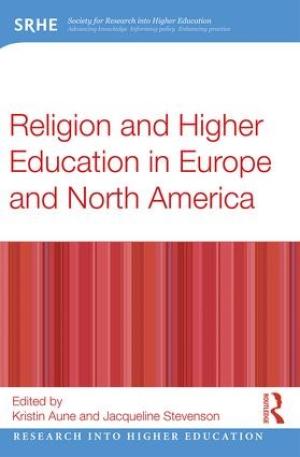
When I arrived on campus as a first-year student, I had the name of an economics professor to track down, given to me by close church friends who knew that he and his wife belonged to a church in my new college town. When I knocked on his office door, he was both delighted and surprised; “I assumed you’d come about enrollment in my seminar. No student has ever asked me about church.” Four years later, he celebrated my graduation with other members of the church I’d faithfully attended. Admittedly, I was an outlier. But my story helps dispel the myth that college is a place to go to lose your faith. Widespread assumptions hold that campuses are secularized spaces where religion surfaces only when it becomes a threat (“Fundamentalist students might endanger others”) or a nuisance (“Religious minorities might protest intolerance”). Contributors to Religion and Higher Education in Europe and North America argue that ordinary, everyday religious experience on campus is more common, less problematic, and more nuanced than many realize. Editors Aune and Stevenson collected thirteen essays by researchers and theorists representing different disciplines and approaches who are all curious about how students negotiate the university environment. Section One shares findings from survey research demonstrating, for example, that when it comes to retaining their religious affiliations, practices, and beliefs, students differ from non-students of the same age only in identifying even more strongly with mainstream religious institutions upon graduation, and in shedding their belief in miracles. Other research shows that all groups, including the ‘nones,’ encounter campus climates hostile to their worldviews. This section tries to render empirical the question of secularization and higher education. It affirms both that religion is a slippery thing to measure and that more research is necessary. Section Two presents qualitative research into the experience of being religious in ostensibly secular British, French, and Canadian universities. It challenges the idea that as a pluralistic, secular ethos grows at the institutional level, loss of faith results at the personal level. Becoming friendly to students’ faith would mean, among other things, ceasing to bracket religion as something purely private and propositional, moving beyond mere tolerance and accommodation toward formation of the whole person, expanding vocabulary beyond the moderate/radical binary (Islam), and creating safe and inclusive space for all. Section Three argues for evidence-based institutional policies that treat religion as a social practice rather than an identity characteristic. One chapter addresses the relationship of religiosity to teaching and learning. Contributors call upon institutions of higher education to promote literacy, connection, and dialogue with respect to religion rather than continuing to fall back on the impersonal, secular, and reductionist norms of civility and free speech. In other words, secularity is not neutrality, and the college or university is not ultimately an arbiter of conflict but rather a pedagogical community. This thought-provoking volume, which deliberately addresses higher education outside the United States, will interest several audiences, including campus life personnel, sociologists of religion, chaplains, teachers, and administrators
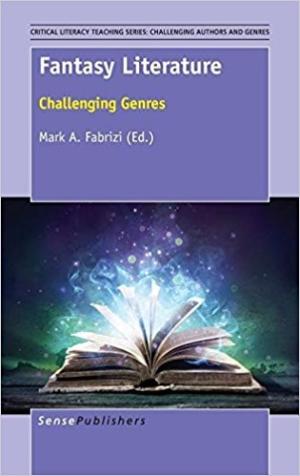
Although it is not immediately apparent from the title this is a book on pedagogy, and it contains many useful ideas for the teaching of religion and theology. Each of the chapters in this volume suggests a way in which teachers in secondary and university education can use popular works of Fantasy Literature to teach critical literacy. Fantasy Literature is difficult to define, but it is hard to deny the enormous influence it has had on popular culture. Rather than dismiss this literature as mere genre fiction, the authors of this book see the popularity of Fantasy Literature as an opportunity to reach and engage a variety of students in serious questions about race, gender, class, and privilege. The book begins with a brief introduction that defines critical literacy broadly, noting that as a blanket term it encompasses Marxist, feminist, postmodern, and other critical theoretical discourses. Following this, most of the chapters in the volume focus on one or two works of Fantasy Literature, demonstrating how they can be used to teach an important concept in critical discourse. Here I will mention a few examples. In the first chapter Neil McGarry and Daniel Ravipinto assess the conservative, patriarchal, and heterosexist autocratic ideology at play in the works of J. R. R. Tolkien and George R. R. Martin. Given the current popularity of the latter’s works, this chapter could inspire a variety of pedagogical interventions. Martha Johnson-Olin reads a current text using historical example in her chapter, “Strong Women in Fairy Tales Existed Before Frozen: Teaching Gender Studies Via Folklore.” Several other chapters use the Harry Potter series: Editor Mark Fabrizi’s chapter uses Harry Potter to teach Machiavelli, while Claire Davanzo uses the actions of Dolores Umbridge and Cornelius Fudge, especially in Harry Potter and the Order of the Phoenix, to teach Marxist ideas about oppression and resistance. While most of the chapters in the book examine one or a few works in light of one critical concept, Nathan Frederickson’s chapter follows a different approach, and is the chapter that would likely be of greatest interest to the readers of this site. In his chapter, Frederickson lays out his plan for a course on religion and Fantasy Literature that focuses on critical pedagogy. This course is divided into eight sections: (1) defining key terms, (2) colonialism, (3) capitalism, (4) perspectivism and pragmatism, (5) feminism and queer theory, (6) interrogating the self, (7) royal ideology and the monomyth, and (8) critical pedagogy and reflexivity. Frederickson provides annotated lists of suggested texts for each of these sections. He also helpfully breaks these lists into those works that are best suited for high school, undergraduate, and graduate classrooms, making this syllabus useful for a wide range of educators. The syllabus chapter is particularly useful, but given its broad scope, it is likely that many teachers of religion will find helpful ideas and suggestions in this book for weaving popular culture and critical literacy into their courses.
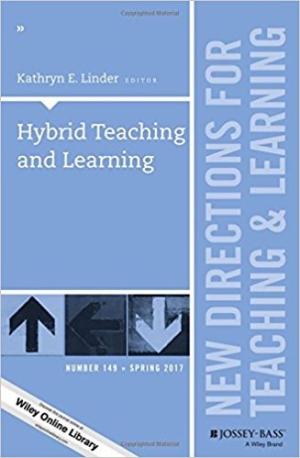
Hybrid Teaching and Learning defines and explains the hybrid approach to teaching and learning by providing answers to questions surrounding this phenomenon. This method of teaching and learning is often referred to as blended pedagogy. Answers to questions and conclusions are arrived at through eleven chapters that together give a strong and comprehensive explanation of hybrid teaching and learning. The authors of the chapters are Kathryn E. Linder, Patsy D. Moskal, Linda S. Bruenjes, Sarah A. Smith, Traci Stromie, Josie G. Baudier, Jason Snart, Faye Haggar, Bruce Kelley, Weichao Chen, Daniel Newman, Michael Dickinson, and Kirsten Behling. Kathryn E. Linder defines hybrid teaching as a pedagogy that utilizes technology to create a variety of learning environments for students (11). This method of teaching and learning reduces the amount of face-to-face encounters between teacher and learner. However, technologically facilitated activities outside of the actual classroom often make the face-to-face meetings more active and meaningful. The teacher of hybrid courses must be intentional in setting up these activities. Each chapter describes its objective clearly and explains it very well for the reader. The pedagogy of hybrid teaching and learning has components similar to other successful pedagogies, including learning outcomes and objectives. A best practice in hybrid pedagogy is to start at the end and work backwards in planning courses. One should know what the desired final outcome is before planning activities. This type of teaching and learning involving backward design requires planning the entire course and may be difficult for teachers who are accustomed to planning classes weekly. This book works well as a framework for understanding hybrid teaching and learning. It is very timely for institutions considering a variety of methods for instruction. The authors suggest ways of keeping the values that come with face-to-face teaching and learning while taking advantage of the many new technologies that enhance teaching and learning. I found chapter 9 to be of particular interest because the author makes a strong argument to teachers about accessibility. Teachers of hybrid courses must ensure that all students can access courses in face-to-face spaces as well as technological spaces. The only weakness that I can identify in this book is that perhaps it could have given more information or insight about the pros and cons of hybrid teaching and learning. This might help others avoid some pitfalls. Overall, I found this book to be a valuable asset. As one who uses hybrid pedagogy I think this book is a helpful tool for all teachers who prepare and plan to teach in this format. Individual chapters or the entire book will help others learn more about hybrid teaching and learning.
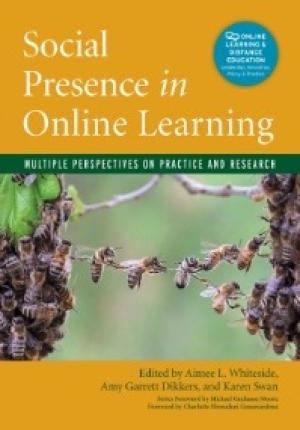
As post-secondary institutions, theological schools continue to participate in various forms of online learning, and the criticism (or question), “It’s not really the same as being in a classroom with a real instructor” is commonly heard. The simple reply to this concern is the concept of social presence. Starting with the initial definition of social presence from Short, Williams, and Christies (1976), this compilation of articles attempts to summarize the historical perspectives and present the current state of discussion, recognizing the constant updating of online course options. The authors successfully present the historical perspectives, grouping them in three broad categories – as technologically facilitated, as learners’ perceptions, and as critical literacy. However, the chronological and developmental approach leaves the reader realizing the earlier chapters have minimal application to current teachers and learners since the understanding of social presence and the technology used have changed so dramatically. The initial discussions about social presence whether through computer-mediated communication or later within the community of inquiry framework were informative, but the reader quickly realizes that the later frameworks and models have improved. Thus the earlier discussions in the book are of little value for today’s teaching-learning environment. In essence, only the last section is relevant, except as historical background. The editors demonstrate their breadth of knowledge of the literature and are involved with and connected to the latest research in social presence. A useful chapter (11), “Cultural Perspectives in Social Presence,” provides valuable guidelines for communicating effectively in a multi-cultural learning context. Multiple examples explain how one subset of students find an online learning activity contributes positively to social presence while those of another culture find it impacts social presence negatively. Variations in anonymity, informal chat, self-disclosure, trust building, and conflict resolution are considered. The chapter concludes with useful tips for monitoring and mediating communication which could be misunderstood because of cultural differences. Likewise, various practices for building social presence into discussions, feedback, and interactions are shared throughout the book. The literature reviewed includes a range of educational levels from K-12 and post-secondary as well as a range of disciplines. The final section provides interesting chapters (17 and 18) about the future of online learning and incorporates social presence into various models of instruction. They suggest social media tools enable instructors to incorporate cohesive and affective elements into courses to enhance social presence. The authors conclude, “Never stop learning because life never stops teaching” (210). The information shared is relevant for any faculty member teaching online, including theological and religious studies professors. While the final chapters contain valuable tips as noted above, I cannot recommend the book as a whole since it is predominantly a historical overview of the concept of social presence. Though it contains various up-to-date strategies in the closing chapters, it was tedious for the reader to sift through the detailed literature for meaningful insights.
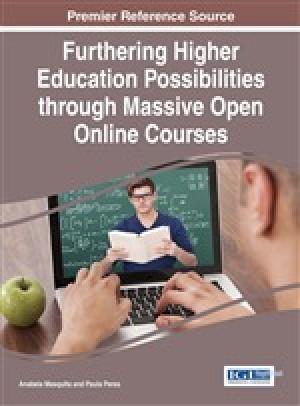
Twelve articles clustered in four sections under this ambitious title evince a desire to promise revolutionary changes that have been associated with Massive Open Online Courses (MOOCs: term-based courses available to the mass free of charge via online media). The authors are truthful to this vision, offering vast ranges of topics including distance learning, open learning, innovations, academic administration, business management, and educational technologies. The book includes a detailed table of contents that provides a concise synopsis, and each chapter concludes with an extensive list of references and other resources. Section 3 offers two articles with case studies. The first features a MOOC that deals with the problem of bullying in schools. It reflects on the use of test cases and finds that timely feedback is critical. The second examines LMOOCs (language MOOCs) that facilitate foreign language acquisition with the aid of mobile platforms. In LMOOCs, mobile devices function not only as a portal to the course site but also as a gateway to real-world language environments. The final section, which contains one chapter, outlines a planned course on mechatronics in a hybrid format, combining the benefits of the face to face approach and a MOOC. The major strength of the book is that it provides guidelines for the implementation of MOOCs in practical terms, away from the clichéd terms (such as “revolution,” “hype,” or “innovation”) that are often associated with them. While the MOOCs revolution is rumored to be coming to an end, the authors assign to the movement a role that could still be made to higher education. To this end, the book calls for pedagogical refinements as well as a clear analysis of the financial viability of MOOCs. Parenthetically, most of the authors assembled in this volume hail from social and geographical locations with European hues. It leaves one to wonder whether claims in this book would have been different if it also included North American or other global contexts, where the movement of MOOCs was born and is still growing.
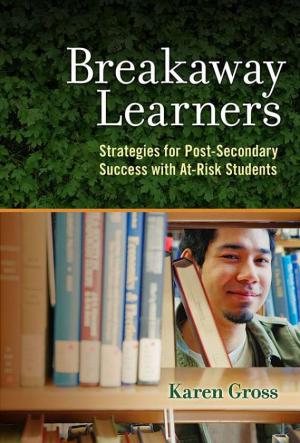
Two root words for education, educare and educere respectively express the complementary principles, to train or mold, and to lead out from. Of the two root words, Karen Gross’s book exemplifies educere, to lead out from, since her basic premise is to meet “students where they are and asks – demands – that institutions do vastly more to understand and respond to the students now enrolled in our educational system” (15). More than a student-centered learning approach to education, Gross suggests that the educational system as a whole should assist students in developing lasticity, a term she uses to describe the quality necessary to enable breakaway students not only to complete their degrees, but also to succeed as adults in the working environment. Gross prefers the term “breakaway learners” rather than “at-risk learners” because it describes more accurately that these students are breaking away from the societal, economic, and familial circumstances that often have hindered their progress in the educational system. She notes that these students have developed the capacity, often overlooked, for lasticity. She defines lasticity as a set of conditions that enables individuals to flourish in education and life. Lasticity is built upon a two-part equation of six qualities (the six Ts) and five building blocks. While she does explain the six Ts (trust, transparency, tranquility, teachers and teaching, tolerance, and temperance), Gross focuses mostly upon the five building blocks of elasticity, plasticity, pivoting right, reciprocity, and belief in self. Within her chapters, she provides clear examples of each of these five building blocks, noting that the first three are centered on the students themselves, whereas the last two require engagement between students and institution. For example, her chapter “Pivoting Right,” while centering on the individual, does describe four ways educators can foster making wise decisions. While Gross addresses developing lasticity in higher education, she also notes that the educational system as a whole, from early childhood to college, requires a re-examination of its purpose and goals. As such, Gross recognizes the challenge of changing the educational pipeline and landscape that would enable the development of lasticity. She identifies both macro and micro challenges that need to be surmounted. Further, she addresses the hurdle of money and provides suggestions as to how to assist students better, even to the recommendation of changing the FAFSA form itself to make it more accessible to all parents and students. Even though her text focuses on changing the educational pipeline, some of her examples can be used now by educators and within institutions. Developing trust, enabling student voices, and encouraging belief in self can be done in many of the ways she suggests as well as through understanding better those whom we help learn along the journey of life. In essence, Gross would probably agree that the process begins with changing the focus of education from educare to educere.
Wabash Center Staff Contact
Sarah Farmer, Ph.D
Associate Director
Wabash Center
farmers@wabash.edu